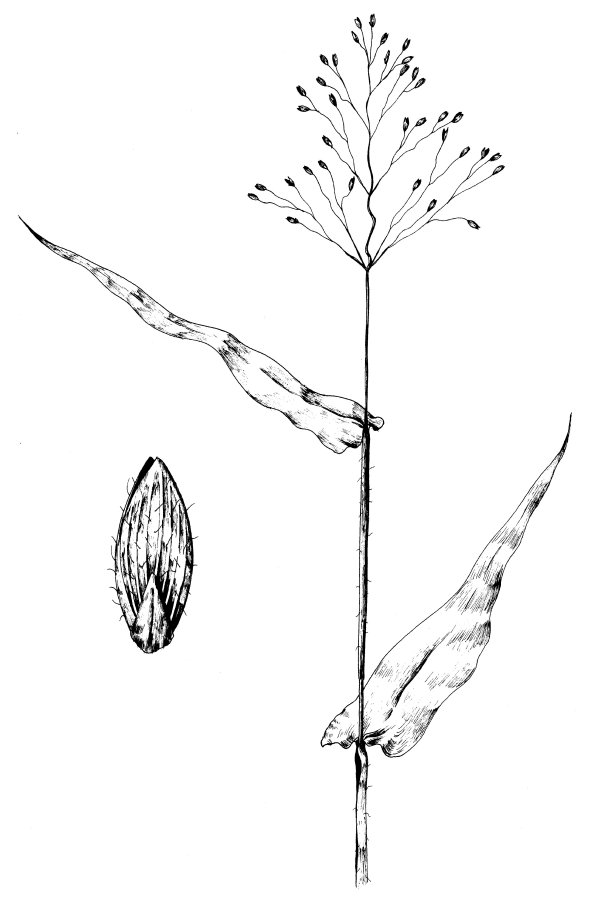
Dichanthelium clandestinum L. Deertongue Dichanthelium Habit: Densely tufted perennial. Vernal form: Usually in very large clumps, sometimes with strong rhizomes 5-10 cm. long. Culms: Several, erect, in very large clumps, 70-150 cm. tall, scabrous to papillose-hispid, at least below the nodes. Blades: 10-20 cm. long, 12-30 mm. wide, spreading or finally reflexed, scabrous on both surfaces, at least towards the end, usually ciliate at base. Sheaths: As long as the internodes, or overlapping until the branches appear, loose, strongly papillose-hispid to nearly glabrous, with a puberulent ring at the summit. Ligule: 0.5 mm. long. Inflorescence: Panicle finally long-exserted, 8-15 cm. long, about three fourths as wide, densely flowered, with fascicled ascending branches, the secondary panicles of the autumnal state wholly included in the sheaths. Spikelets: 2.7-3 mm. long, 1.4-1.5 mm. wide, obovate-oblong, sparsely pubescent. Glumes: First one third the length of the spikelet, subacute or obtuse, the second slightly shorter than the fruit and sterile lemma. Fruit: Elliptic 2.1-2.3 mm. long, 1.2-1.3 mm. wide, grain free within the rigid firmly closed lemma and palea. Autumnal form: Erect or leaning, sparingly branching, often before maturity of the primary panicles, from the middle and upper nodes, the branches leafy, the swollen bristly sheaths overlapping on the shortened internodes and enclosing wholly or partially the secondary panicles, spikelets more turgid than those of the primary panicles. Habitat: Moist mostly sandy ground. June-August. Kansas Range: East third. Synonyms: Panicum clandestinum L.